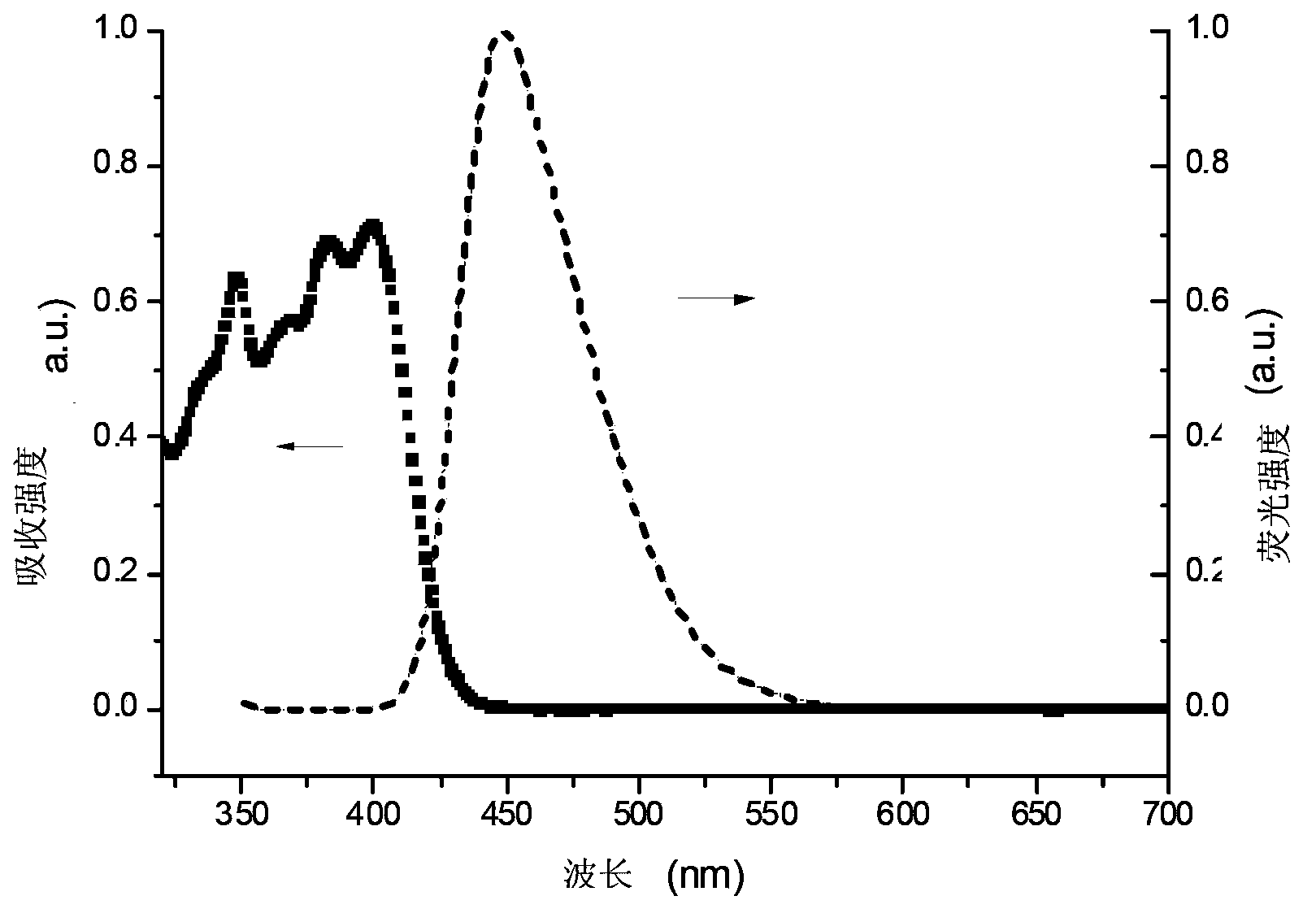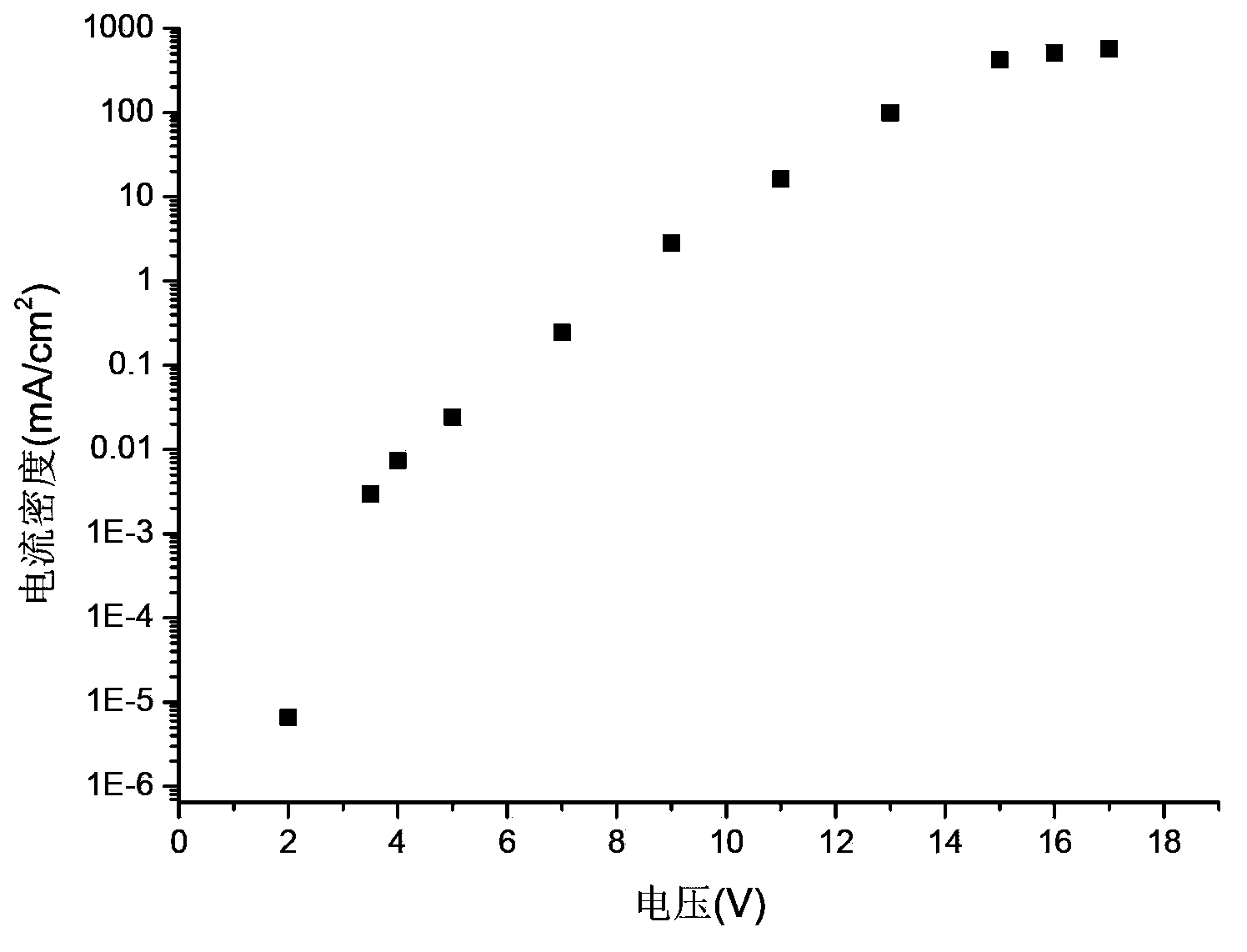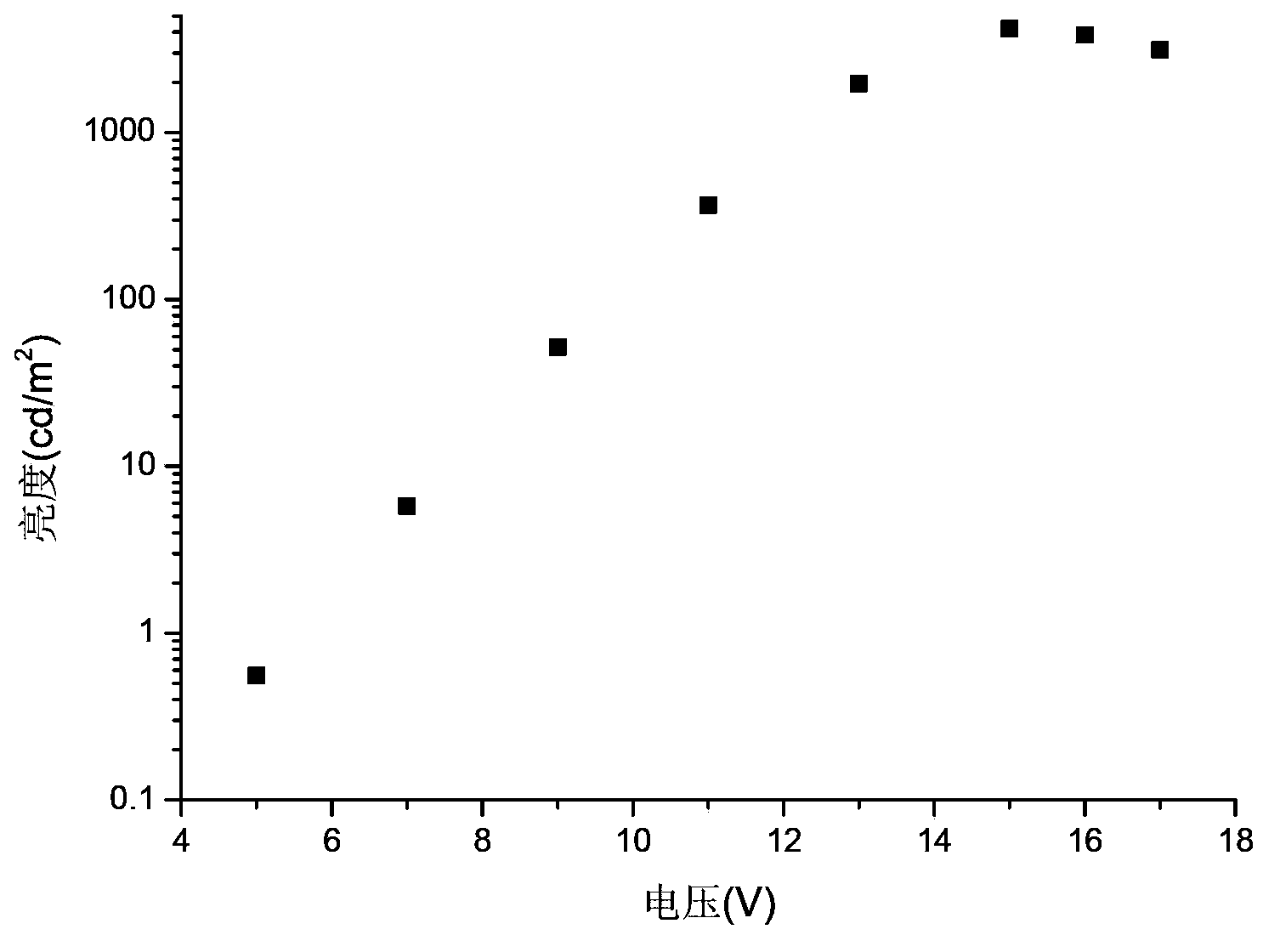Novel electroluminescent material and application thereof
A technology of electroluminescent materials and electroluminescent devices, which is applied in the direction of luminescent materials, circuits, electrical components, etc., can solve the problems of low luminous efficiency, short service life, affecting the development of organic electroluminescent devices, etc. mass, increased molecular thermal stability, and good electroluminescent properties
- Summary
- Abstract
- Description
- Claims
- Application Information
AI Technical Summary
Problems solved by technology
Method used
Image
Examples
Embodiment 1
[0039] Example 1 Preparation and properties of luminescent material BECz:
[0040] 1 Synthesis of luminescent material BECz
[0041] In a 250mL three-necked flask, add 1.3g 2,6-di-tert-butyl-9,10-dibromoanthracene (2.9mmol) and 2.5g N-phenyl-3-carbazole borate (6.8mmol), add the mixed solvent (70mL toluene, 35mL ethanol), then add 20mL K 2 CO 3 Aqueous solution (2M), stirred with nitrogen for 1 hour to remove oxygen in the reaction flask, added Pd(PPh 3 ) 4 0.183g (0.158mmol), reflux under strong stirring, continuous reaction for 24h. Add 50mL deionized water and 150mL ethyl acetate to the reaction liquid, separate the liquid, collect the organic phase, concentrate under reduced pressure, and purify the crude product by column chromatography, the eluent is ethyl acetate:n-hexane (1:10) 1.8g of yellow solid was obtained, which was recrystallized using tetrahydrofuran: absolute ethanol (1:2) to obtain 1.5g of light yellow solid, which was further sublimated and purified usi...
Embodiment 2
[0045] Example 2 Application of luminescent material BECz in organic electroluminescent devices
[0046] This embodiment prepares blue organic electroluminescent device according to the following method:
[0047] a) Clean ITO (indium tin oxide) glass: ultrasonically clean the ITO glass with deionized water, acetone, and ethanol for 30 minutes each, and then treat it in a plasma cleaner for 5 minutes;
[0048] b) Vacuum-evaporated hole transport layer NPB on the anode ITO glass with a thickness of 50nm;
[0049] c) On the hole-transporting layer NPB, vacuum-evaporate the light-emitting layer BECz with a thickness of 30nm;
[0050] d) On top of the light-emitting layer BECz, an electron transport layer TPBI is vacuum-evaporated with a thickness of 30 nm;
[0051] e) On top of the electron transport layer TPBI, the electron injection layer LiF is vacuum evaporated with a thickness of 1 nm;
[0052] f) On top of the electron injection layer LiF, a cathode Al is vacuum-evaporated ...
Embodiment 3
[0054] Example 3 Preparation and properties of luminescent material BEP:
[0055] 1 Synthesis of luminescent material BEP
[0056] In a 500mL three-necked flask, add 1.2g 2,6-di-tert-butyl-9,10-dibromoanthracene (2.67mmol) and 2.84g 4-carbazolephenylboronic acid (6.4mmol), add a mixed solvent (75mL toluene, 38mL ethanol ), then add 25mL K 2 CO 3 Aqueous solution (2M), stirred with nitrogen for 1 hour to remove oxygen in the reaction flask, added Pd(PPh 3 ) 4 0.21g, reflux under strong stirring, continuous reaction for 36h. Add 70mL deionized water and 150mL ethyl acetate to the reaction liquid, separate the liquid, collect the organic phase, concentrate under reduced pressure, and purify the crude product by column chromatography, the eluent is chloroform:n-hexane (1:3) 1.6g of crude product was obtained, which was recrystallized using chloroform: ethyl acetate (1:10) to obtain 1.2g of a white solid, which was further sublimated and purified using a chemical vapor deposit...
PUM
| Property | Measurement | Unit |
|---|---|---|
| wavelength | aaaaa | aaaaa |
| luminance | aaaaa | aaaaa |
Abstract
Description
Claims
Application Information
 Login to View More
Login to View More - R&D
- Intellectual Property
- Life Sciences
- Materials
- Tech Scout
- Unparalleled Data Quality
- Higher Quality Content
- 60% Fewer Hallucinations
Browse by: Latest US Patents, China's latest patents, Technical Efficacy Thesaurus, Application Domain, Technology Topic, Popular Technical Reports.
© 2025 PatSnap. All rights reserved.Legal|Privacy policy|Modern Slavery Act Transparency Statement|Sitemap|About US| Contact US: help@patsnap.com



